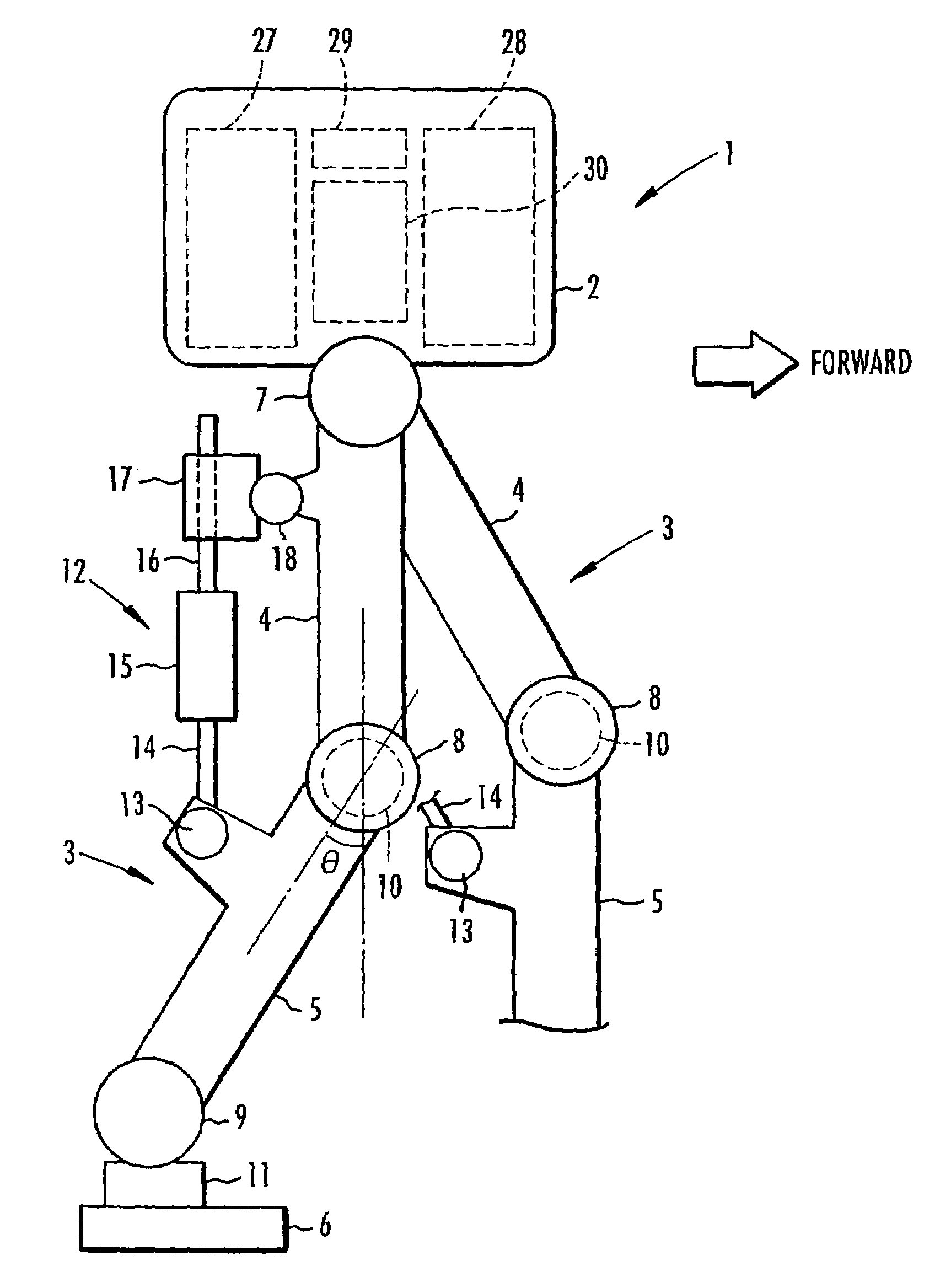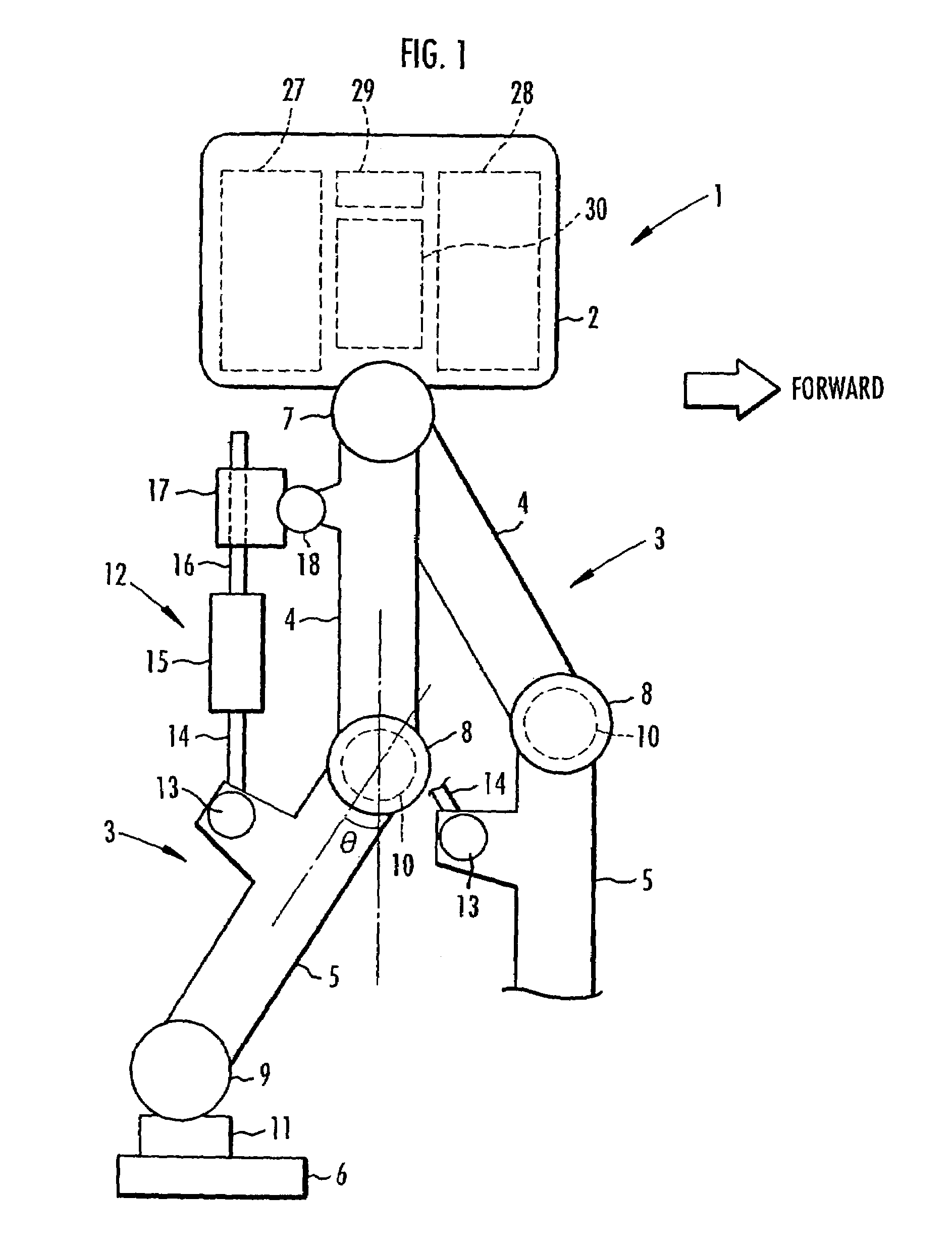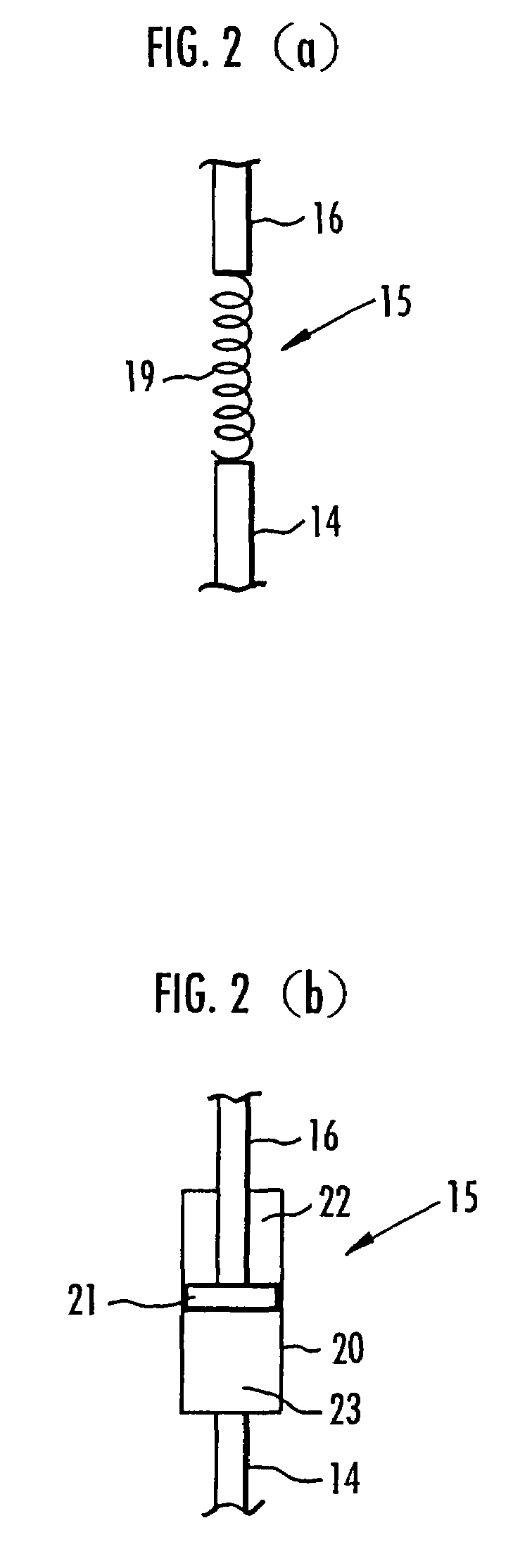Leg joint assist device for leg type movable robot
a technology of assist device and leg joint, which is applied in the direction of shock absorbers, program control, instruments, etc., can solve the problems of large size and weight of electric motors, large impact force, and large impact force, so as to reduce the burden on the joint actuator of the specific joint, prevent free vibration of spring means, and minimize the effect of energy loss from joule heat or the lik
- Summary
- Abstract
- Description
- Claims
- Application Information
AI Technical Summary
Benefits of technology
Problems solved by technology
Method used
Image
Examples
first embodiment
[0047]the present invention is described with reference to FIGS. 1 to 8. FIG. 1 is a schematic view depicting a configuration of a biped mobile robot as the legged mobile robot of this embodiment. As illustrated, the robot 1 is provided with two legs 3 and 3 extending downward from a body 2. Note that these legs 3 and 3 have the same structure and thus one of the legs 3 (the forward-left leg 3 of the robot 1 in the figure) is shown only partially.
[0048]Similarly to the leg of a human, each of the legs 3 is configured by sequentially connecting a thigh portion 4, a crus portion 5, and a foot portion 6 through a hip joint 7, a knee joint 8, and an ankle joint 9, respectively, from the body 2. To be more specific, the thigh portion 4 of each of the legs 3 extends from the body 2 through the hip joint 7, the crus portion 5 is connected to the thigh portion 4 through the knee joint 8, and the foot portion 6 is connected to the crus portion 5 through the ankle joint 9. Note that respectiv...
third embodiment
[0108]Further, as shown in FIG. 12(b), the locked state of the lock mechanism 39 is a state where the latch pin 25 is moved forward and fitted into one of the recesses 16a′ of the rod member 16. In this locked state, the actuation of the assist device 12 is similar to that of the foregoing Specifically, when the knee bending angle becomes larger than the knee bending angle at the start time of the locked state (lock start knee bending angle), the spring means 15 stores elastic energy and generates an elastic force. This elastic force then acts on the knee joint 8 in the stretching direction of the leg 3. Moreover, when the knee bending angle becomes smaller than the lock start knee bending angle, the latch pin 25 is withdrawn from the recess 16a′, since each of the recesses 16a′ has the aforementioned tapered surface 16b. Thereafter, the rod member 16 moves as shown by an arrow in FIG. 12(b). Therefore, the spring means 15 is kept in the almost natural length state, and thus the au...
sixth embodiment
[0122]Here, the connecting structure of the pulley 53 and the crus portion 5 is more specifically described with reference to FIG. 17. Similar to the case of the aforementioned sixth embodiment, the rotating shaft portion 49 of the crus portion 5 is rotatably supported by the thigh portion 4 through the bearing 50. One end portion of the rotating shaft portion 49, projecting to the outside of the thigh portion 4, is connected to the output side of the speed reducer 56. The input shaft 56a of the speed reducer 56 is releasably connected to the rotating shaft portion 53a of the pulley 53 through the clutch mechanism 55. In this case, the clutch mechanism 55 fixes the rotating shaft portion 53a of the pulley 53 to the input shaft 56a of the speed reducer 56 and releases the fixed rotating shaft portion 53a. The clutch mechanism 55 is configured by an electromagnetic clutch or the like. During the knee bending and stretching motion, the speed reducer 56 increases the rotation speed of t...
PUM
 Login to View More
Login to View More Abstract
Description
Claims
Application Information
 Login to View More
Login to View More - R&D
- Intellectual Property
- Life Sciences
- Materials
- Tech Scout
- Unparalleled Data Quality
- Higher Quality Content
- 60% Fewer Hallucinations
Browse by: Latest US Patents, China's latest patents, Technical Efficacy Thesaurus, Application Domain, Technology Topic, Popular Technical Reports.
© 2025 PatSnap. All rights reserved.Legal|Privacy policy|Modern Slavery Act Transparency Statement|Sitemap|About US| Contact US: help@patsnap.com



